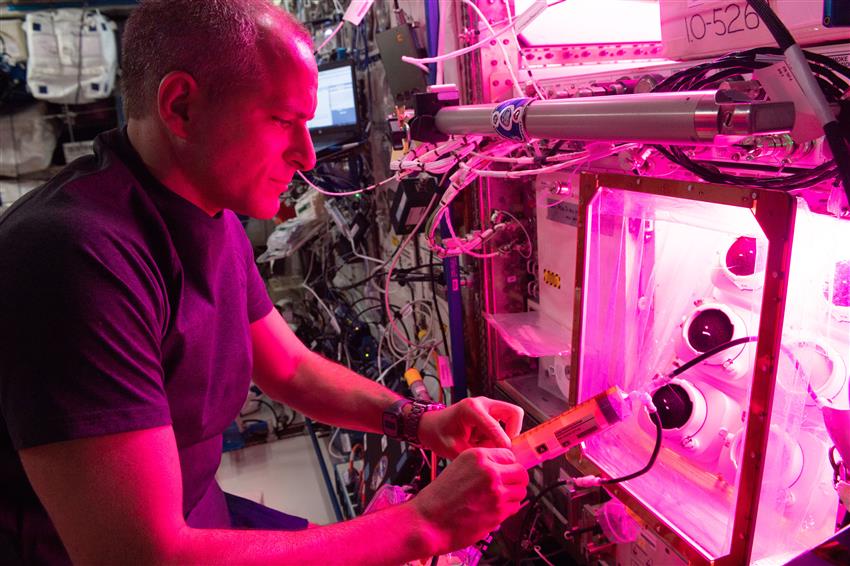Growing healthy food in space and in remote areas
Living a healthy, sustainable lifestyle can be a challenge for all of us, but it can be especially difficult in remote areas on Earth—and also in space. As part of plans to send astronauts farther into the solar system, the Canadian Space Agency (CSA) is working with its partners to learn how to grow healthy food in harsh environments, both in space and on Earth.
Background
Astronauts living aboard the International Space Station (ISS) receive shipments of fresh food every few months. These deliveries supplement their menu, adding variety and nutrition—important factors in keeping crewmembers healthy and happy. But as missions venture to more distant destinations like the Moon or Mars, astronauts will need to be more self-sufficient. Greater distances will make resupply trips less frequent or impossible. Instead, space travellers will need to develop "green thumbs" to grow their own food in space.
Space food must be compact and lightweight, as well as nutritious and tasty! Food is selected and packaged to last the entire duration of a mission. Astronauts enjoy a balanced diet during their stay in space with menus that contain between 1900 and 3200 calories per day, depending on the needs of each crewmember.
Objectives
As a partner in the US-led Gateway, the CSA is preparing to feed the astronauts of the future, and exploring ways for Canada to become a partner in advanced food production systems on the surface of the Moon.
Impacts on Earth
Learning to grow food in extreme or hostile environments like space is a challenge that many of Canada's northern communities also face. The CSA is exploring ways of using space technology to help improve the accessibility of fresh food across the country, including the North.

